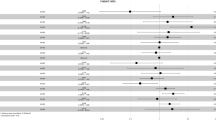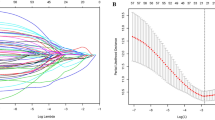Abstract
Ovarian cancer is the deadliest gynaecological disease because of the high mortality rate and there is no any symptom in cancer early stage. It was often the terminal cancer period when patients were diagnosed with ovarian cancer and thus delays a good opportunity of treatment. The current common method for detecting ovarian cancer is blood testing for analyzing the tumor marker CA-125 of serum. However, specificity and sensitivity of CA-125 are insufficient for early detection. Therefore, it has become an urgent issue to look for an efficient method which precisely detects the tumor markers for ovarian cancer. This study aims to find the target genes of ovarian cancer by different algorithms of information science. Feature selection and decision tree were applied to analyze 9600 ovarian cancer-related genes. After screening the target genes, candidate genes will be analyzed by Ingenuity Pathway Analysis (IPA) software to create a genetic pathway model and to understand the interactive relationship in the different pathological stages of ovarian cancer. Finally, this research found 9 oncogenes associated with ovarian cancer and some genes had not been discovered in previous studies. This system will assist medical staffs in diagnosis and treatment at cancer early stage and improve the patient’s survival.






Similar content being viewed by others
References
Malumbres, M., and Barbacid, M., Milestones in cell division: to cycle or not to cycle: A critical decision in cancer. Nat. Rev. Cancer 1(3):222–231, 2001.
Cairns, R. A., Harris, I. S., and Mak, T. W., Regulation of cancer cell metabolism. Nat. Rev. Cancer 11(2):85–95, 2011.
Meng, Q. H., et al., Genetic variants in the fibroblast growth factor pathway as potential markers of ovarian cancer risk, therapeutic response, and clinical outcome. Clin. Chem. 60(1):222–232, 2014.
Lazova, R., et al., Punctate LC3B expression is a common feature of solid tumors and associated with proliferation, metastasis, and poor outcome. Clin. Cancer Res. 18(2):370–379, 2012.
Nossov, V., et al., The early detection of ovarian cancer: From traditional methods to proteomics. Can we really do better than serum CA-125? Am J Obstet Gynecol 199(3):215–223, 2008.
Chen, C.-L., et al., Reciprocal regulation by TLR4 and TGF-β in tumor-initiating stem-like cells. J. Clin. Invest. 123(7):2832, 2013.
Breiman, L., et al., Classification and regression trees. Chapman and Hall, New York, 1993.
Michael, J. A., and Gordon, S. L., Data mining technique: For marketing, sales and customer support. Wiley, New York, 1997.
Chen, C., et al., KLF5 is frequently deleted and down-regulated but rarely mutated in prostate cancer. Prostate 55(2):81–88, 2003.
Chen, C., et al., A possible tumor suppressor role of the KLF5 transcription factor in human breast cancer. Oncogene 21:6567–6572, 2002.
Bateman, N. W., et al., Intestinal tumor progression is associated with altered function of KLF5. J. Biol. Chem. 279:12093–12101, 2004.
Sun, R., et al., Intestinal-enriched Krüppel-like factor (Krüppel-like Factor 5) is a positive regulator of cellular proliferation. J. Biol. Chem. 276:6897–6900, 2001.
Oishi, Y., et al., Krüppel-like transcription factor KLF5 is a key regulator of adipocyte differentiation. Cell Metab. 1:27–39, 2005.
Nandan, M. O., et al., Krüppel-like factor 5 mediates the transforming activity of oncogenic H-Ras. Oncogene 23:3404–3413, 2004.
Beltran, A., et al., Fluorescence in situ hybridization analysis of CCND3 gene as marker of progression in bladder carcinoma. J. Biol. Regul. Homeost. Agents 27(2):559–567, 2012.
Schmitz, R., et al., Oncogenic mechanisms in Burkitt lymphoma. Cold Spring Harb Perspect Med 4(2):a014282, 2014.
Guan, S., et al., Characterization of single amino acid substitutions in the β2 integrin subunit of patients with leukocyte adhesion deficiency (LAD)-1. Blood Cell Mol. Dis. 54(2):177–182, 2015.
Tumbarello, D. A., et al., Beta3 integrin modulates transforming growth factor beta induced (TGFBI) function and paclitaxel response in ovarian cancer cells. Mol. Cancer 11:36, 2012.
Saitou, M., et al., Identification of the TCL6 genes within the breakpoint cluster region on chromosome 14q32 in T-cell leukemia. Oncogene 19(23):2796–2802, 2000.
Dong, X. Y., et al., Zinc-finger protein ZNF165 is a novel cancer-testis antigen capable of eliciting antibody response in hepatocellular carcinoma patients. Br. J. Cancer 91(8):1566–1570, 2004.
Karvonen, U., et al., ZNF451 is a novel PML body-and SUMO-associated transcriptional coregulator. J. Mol. Biol. 382(3):585–600, 2008.
Tripathi, A., et al., Gene expression abnormalities in histologically normal breast epithelium of breast cancer patients. Int. J. Cancer 122(7):1557–1566, 2008.
Craig, B., et al., The expression ratio of Map7/B2M is prognostic for survival in patients with stage II colon cancer. Int. J. Oncol. 33(3):579–584, 2008.
Tala, et al., Microtubule-associated protein Mdp3 promotes breast cancer growth and metastasis. Theranostics 4(10):1052–1061, 2014.
Beatrice, M. D., et al., The association between the expression of solute carrier transporters and the prognosis of pancreatic cancer. Cancer Chemother. Pharmacol. 72(3):669–682, 2013.
Wong, A. L., et al., Gemcitabine and platinum pathway pharmacogenetics in Asian breast cancer patients. Cancer Genomics Proteomics 8(5):255–259, 2011.
Boldt, H. B., and Conover, C. A., Overexpression of pregnancy-associated plasma protein-A in ovarian cancer cells promotes tumor growth in vivo. Endocrinology 152:1470–8, 2011.
Dong, Z., et al., KLF5 strengthens drug resistance of ovarian cancer stem-like cells by regulating survivin expression. Cell Prolif. 46(4):425–435, 2013.
Crane, E. K., et al., Nutlin-3a: A potential therapeutic opportunity for TP53 wild-type ovarian carcinomas. PLoS One 10(8), e0135101, 2015.
Becker, M. A., et al., A novel neutralizing antibody targeting pregnancy-associated plasma protein-A inhibits ovarian cancer growth and Ascites accumulation in patient mouse Tumorgrafts. Mol. Cancer Ther. 14(4):973–981, 2015.
Tsai, M. H. et al. (2014) A bio-inspired computing model for Ovarian Carcinoma classification and oncogene detection. Bioinformatics btu782.
Acknowledgments
The authors would like to thank the Ministry of Science and technology of Taiwan for Grants MOST-103-2622-E-005-022-CC3 and National Science Council of Taiwan for Grants NSC-102-2622-E-005-011-CC3 and NSC-102-2622-E-005-015-CC3 which supported part of this research.
Author information
Authors and Affiliations
Corresponding author
Additional information
This article is part of the Topical Collection on Transactional Processing Systems
Rights and permissions
About this article
Cite this article
Tsai, MH., Wang, HC., Lee, GW. et al. A Decision Tree Based Classifier to Analyze Human Ovarian Cancer cDNA Microarray Datasets. J Med Syst 40, 21 (2016). https://doi.org/10.1007/s10916-015-0361-9
Received:
Accepted:
Published:
DOI: https://doi.org/10.1007/s10916-015-0361-9




